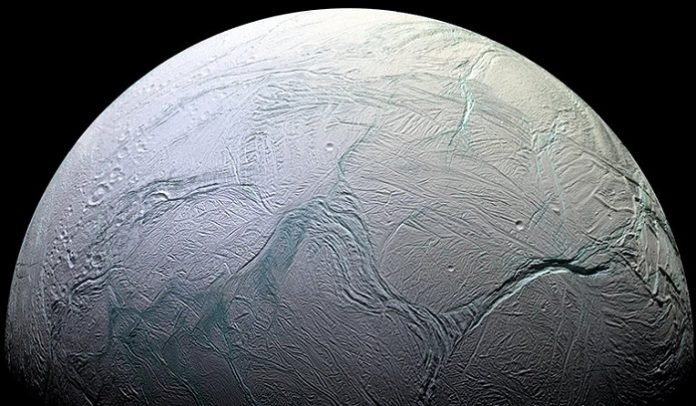
In a new study, researchers found the reason why one of Saturn’s moons has an underground ocean.
The study was done by researchers from the University of Maryland and the Southwest Research Institute.
Previous research has shown that Saturn has over 60 moons.
Some moons are quite small, with less than 300 meters across. Some moons are quite big, such as Titan which has a larger circumference than Mercury.
In addition, some moons have an orbit close to the planet, while other moons’ orbits are quite far away.
Scientists believe that only one of Saturn’s moons, Enceladus, has a subsurface ocean.
In the current study, the team used a computer model they built to replicate conditions near Saturn over time.
They aimed to find out why Enceladus is unique in the Saturn system.
The researchers designed their model to mimic the behavior of Saturn and its moons over the course of the past 4.5 billion years.
The model includes several important features of Saturn moons.
First, Saturn has just five inner moons, and each inner moon is large enough to have a subsurface ocean and close enough to the planet to melt ice.
Second, all of the inner moons may be developed as a result of coalesced material pulled together from debris around the planet, and this would have included ice.
Third, all five of the moons are impacted by the gravitational pull of the planet and from one another.
The new model is different from previous ones because it mimics both the tides on Saturn’s moons and their geology.
The team believes that mimicking both things can help explain why only one of the moons has a subsurface ocean.
They found that Enceladus had a subsurface ocean because of its unique gravitational interactions with the other moons: They forced Enceladus into an oblong orbit.
The results also showed that Saturn’s pull on Enceladus continually distorted the moon. In addition, the flexing heated the moon’s interior and allowed the water underground to remain liquid.
None of the other four moons had such conditions to make water remain liquid beneath their surfaces.
Their finding provides a plausible explanation for the existence of the ocean beneath the surface of one of Saturn’s moons.
The authors of the study Marc Neveu and Alyssa Rhoden.
The study is published in Nature Astronomy.
Copyright © 2019 Knowridge Science Report. All rights reserved.



